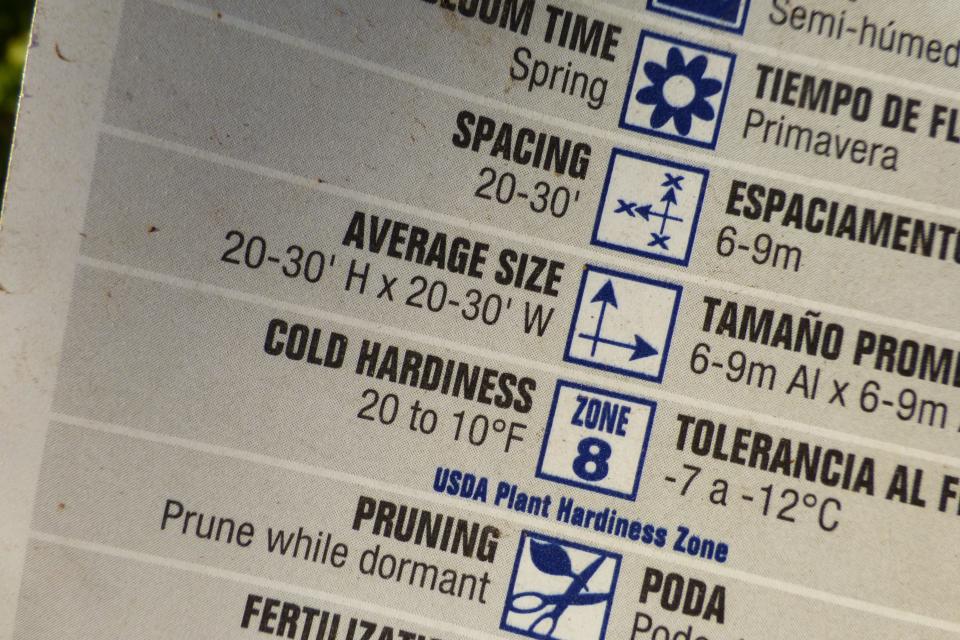Peffley: USDA plant hardiness zones explained
Gardeners should always look at their growing climate before choosing plants for their landscapes. The USDA Plant Hardiness Zone Map is the standard by which gardeners can determine which plants are most likely to survive winters in a geographic location.
A main responsibility of the United States Department of Agriculture (USDA) is to keep temperature records for every state in the U.S. The USDA has kept temperature records for decades, publishing the first recommended growing zone map in 1960. The hardiness zone map is produced by the USDA Agricultural Research Service (ARS) and is available on their website, planthardiness.ars.usda.gov.
Hardiness zones are based on average annual extreme minimum temperatures during the previous 30 years but not the lowest temperature that has ever occurred in the past or might occur in the future.

Zones are divided into 10-degree Fahrenheit increments from the coldest, with the lowest numbers increasing numerically with increased minimum temperatures. Zones are further subdivided into 5-degree Fahrenheit increments, designated with "a" and "b" for more precise temperature ranges. For reference, the interior of Alaska is in USDA Hardiness Zone 1a, experiencing average minimum temperatures of -60 to -55° F, while the Hawaiian Islands are in zone 13b, experiencing average minimum temperatures above freezing, 65 to 70° F.

The hardiness zone is an essential guide when selecting perennial ornamentals, shrubs, and trees. Plants should survive when grown in a given location’s the zone, but it may be a good idea to choose varieties and specimens that can survive in a colder climate. For instance, Lubbock is in USDA Hardiness Zone 7b, experiencing average minimum temperatures of 5 to 10°F but just north of Lubbock, Plainview and Amarillo are in zone 7a, with average minimum temperatures of 0 to 5°F. Choosing a plant that is adapted to zones 6 may be prudent in our region, given the volatility of recent winter temperatures.
Gardens have small niches that create localized microclimates, subtle climate changes created by locations that have southern or northern exposures, are sheltered or protected from wind. One part of a landscape might have small pockets that are warmer or colder than the surrounding area. Only after years of gardening experience are microclimates discovered in a given location. The way plants are placed in the landscape, how they are planted, and their size and health also influence their survival.
Plants acquire cold hardiness gradually in the fall with the onset of shorter days and dropping temperatures, but hardiness can be lost in the winter months with warmer temperatures. Tissues can be damaged with snaps of extremely low temperatures. Hardiness zones cannot forecast plant survival under such conditions.
An interactive GIS-based map can be found at these websites: fs.fed.us and gpsr.ars.usda.gov by entering the ZIP code of a given location.
Ellen Peffley taught horticulture at the college level for 28 years, 25 of those at Texas Tech, during which time she developed two onion varieties. She is now the sole proprietor of From the Garden, a market garden farmette. You can email her at gardens@suddenlink.net
This article originally appeared on Lubbock Avalanche-Journal: Peffley: USDA plant hardiness zones explained

